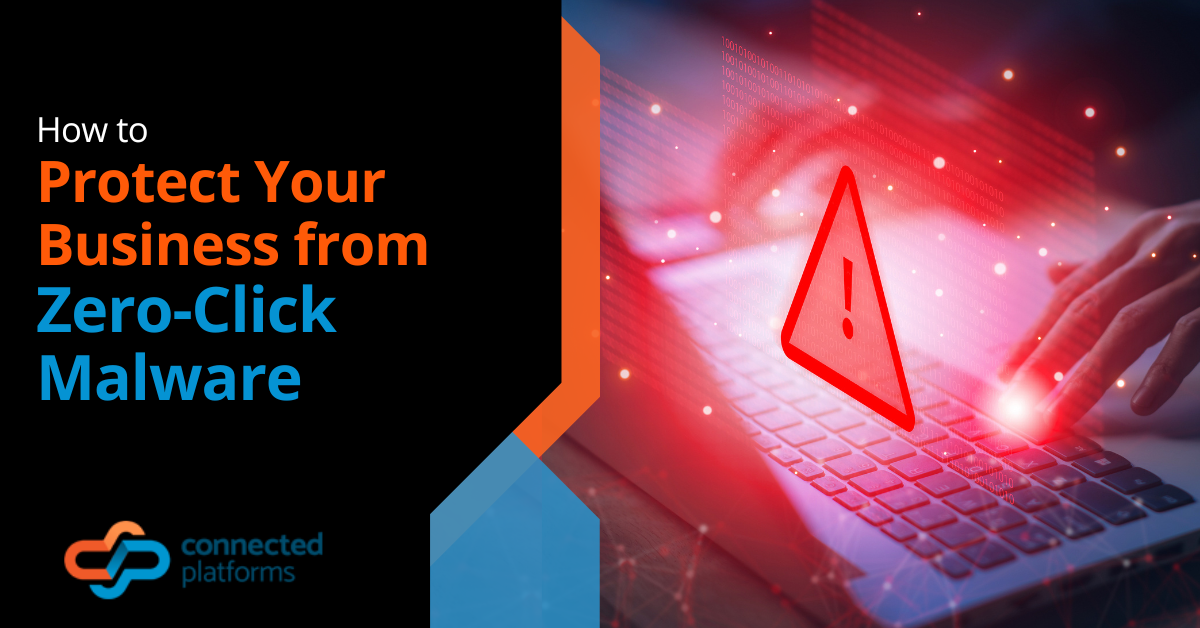For many years, statistics and IT professionals have told us that the greatest contributor to successful cyberattacks is human error. This has led to an innumerable number of companies hiring IT consultants to design custom IT training to improve staff security hygiene. A report from Cybersecurity Connect found that 85% of businesses offered their employees training at least once every four months.
Numerous strategies and processes have been developed, and the focus is to ensure that employees can adequately be prepared to defend themselves and the company from risky actions such as opening phishing emails. However, in recent years, things have been fast changing.
Certain attack types have sprung up recently, and their mode of approach is rendering training manuals and customised anti-cyber strategies useless. These novel attack strains are called zero-click attacks and have recently become the talk of the IT world due to how they work.
You do not have to click a link accidentally or intentionally to get stung by a zero-click attack, hence the name. Many famous people and big companies have been hit by these kinds of attacks, from Jeff Bezos to Apple to WhatsApp. This article examines how zero-click attacks work and how to protect your business.
What Is Zero-click Malware?
Conventionally, hacking software can be effective when the targeted device’s user clicks on a link or downloads a file which is the software, which then proceeds to install itself on the device. Zero-click attacks go one step further; you do not have to click a link or download anything before the malware gets on your device. All it does is take advantage of and exploit a vulnerability, using it to gain access to other parts of the device without the device owner’s consent or acknowledgment.
While zero-click attacks have been around the block for a long time, the increase in the use of mobile devices like tablets and smartphones globally is causing an increase in the number of hackers choosing the zero-click method. Hence, as the use of mobile phones by business owners, private users, and homeowners continue to rise, there will definitely be a corresponding increase in zero-click attacks. People must be wary and trained to defend themselves against this new yet old threat.
How Zero-click Attacks Work
Below is a line-by-line process on how a zero-click attack works:
- Malicious actors identify vulnerabilities in a device, either within a messaging application or mail. These vulnerabilities are usually part of an application’s data processing and evaluating capabilities and systems.
- The malicious actors then move to exploit the vulnerability by forwarding a well-designed message to the user, or more specifically, their device. The message usually involves creating specially formed data, like a pixel or a hidden text message, and embedding a malicious code into the pixel or text message, which then finds its way into the device.
These specially formed data can also be voicemails, authentication requests, phone or WhatsApp calls, and even video conferencing sessions. All of these can be used as a factor if they exploit the previously identified vulnerability.
- Once the vulnerability is activated, the actors can send in their weapons – Trojans, spyware, malware – anything that helps them achieve their goals.
- Infected devices allow actors the chance to access the device’s contents. In some cases, the actor can take over the device completely and send messages and other forms of communication to other users on the actual user’s behalf.
- It is around this time that the victim finds out that something is wrong. Even at this point, there is almost nothing that can be done. Also, they might not be able to trace the location of the compromised message or factor on the device.
Please note that this is a general process, as the specifics of a zero-click attack have not been fully unravelled. While each situation might follow the above process, there might be a few differences.
How to Protect Your Device from Zero-click Attacks
It is normal to feel powerless after learning about the processes and effects of a zero-click attack. However, it does not mean that there is absolutely nothing to be done to prevent one. There are many steps you can embark on to prevent your business from being successfully attacked.
While most of these steps are not specifically designed to combat zero-click attacks, the good news is that most of them are commonly taught measures in standard cybersecurity defence strategies, which means if your business took some seminars and training by cybersecurity professionals, then the problem is half solved:
- Ensure your internet-connected devices’ firmware, OS (operating system), and applications are constantly up to date. Consistently schedule update checking and installations.
- Make your passwords long, unique, and random. Using a mix of characters is always an effective method for this.
- Uninstall or disable applications, especially messaging applications) that you do not constantly use or do not use at all.
- Use MFA (multi-factor authentication).
- Use only company-approved applications or download apps from official stores. Most online app stores have stringent app-vetting procedures, which means you can trust them.
- Refrain from using the same passwords for different platforms.
- Use your mobile device’s security features – fingerprint scanner, passwords, facial recognition – for increased security.
- Do not jailbreak or root your mobile device (Android and iOS), as these actions disable numerous security measures mobile devices possess.
Increase Your Business’ Security Levels with Connected Platforms
Connected Platforms offers business IT solutions to Australian companies, such as business continuity management and IT disaster recovery. Contact us to learn more.




